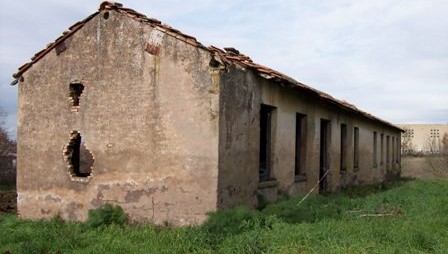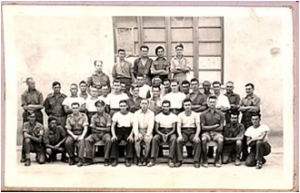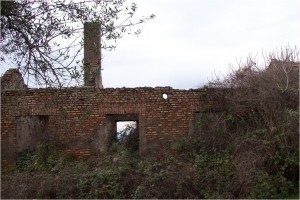English Prisoners in Vetralla
July 10th , 2012
On August 2, 1940 the submarine HMS Oswald of the British Navy colliding with an Italian destroyer, Vivaldi, and due to the extensive damage the commander, Captain Fraser decided to abandon ship.
As their ship disappeared beneath the water for the last time the crew gave three cheers and after two and a half hours in the sea the 52 crew members (three unfortunately perished) were taken onboard the Italian destroyer, given food and blankets and brought to a naval hospital in Taranto.
The surviving seamen were soon moved north to the island of Poveglia near Venice where they worked on road repairs and in gardens. A few months later, in October, they were transported by train to the Fonte D’Amore camp Number 78, located three miles outside the mountain town of Sulmona in the central Abruzzi region.
Illustrated prison log books kept by some of the men describe their travels and how Italian soldiers with fixed bayonets guarded them when their train stopped at stations along the way. They showed their humanity when they also allowed the prisoners to catch bags of sweets thrown to them by the people.
In Sulmona, the prisoners passed the time drawing pictures and graffiti which can still be seen on the barrack walls but when winter arrived in the Abruzzi mountains, the scantily clad English suffered terribly from the cold. In order to keep their feet from freezing they tied wood to the soles of their boots and fashioned socks out of sheets.
Escaping was never far from their minds, but successful escape attempts made life harder for those who remained behind for contrary to the Geneva Convention, collective punishment such as food reduction was usually given after a successful getaway.
After an escape attempt that failed at the last moment, Seaman Edward Penny volunteered in June 1942 for a work party and with 200 fellow prisoners soon found himself in Vetralla, 68 kms north of Rome. Here he learned more of the Italian language and worked as part of the building crew in the creation of a large, new camp for captured Allied military prisoners.
A Swiss delegation document testified that the prisoners were allowed relative freedom at the Vetralla camp and could take walks in the countryside which often lasted from morning to evening. This gave the British prisoners ample time to make friends with the local people, exchange food and other goods with them and to participate in the local life.
According to the Ministry of the Interior’s report conserved in the Italian State Archives, Seaman Penny escaped from the camp after stealing a bicycle and travelled to the Vatican, the closest neutral state, where he asked for help. The Italian Ministry’s report (306274.53 of Oct 13, 1942-the 20th year of Fascist government) says that he would be turned over to the Italian authorities and would be consigned to a camp representative to be returned directly to the camp in Vetralla.Official English Naval documents conserved at the Portsmouth Naval Museum tell the real version of Seaman Penny’s imprisonment and escape. Using his newly acquired language abilities Penny narrates that he befriended local workers employed at the camp and after finding and repairing an old blue overalls similar to those worn by the local plumbers, he darkened his hair with soot, pencilled his eyebrows and was able to walk out of the camp dressed like one of the workers. Exchanging his watch for a bicycle he cycled the 68 kilometres to Vatican City gates where he was taken in by the resident British Minister and stayed there as his guest until he was flown out of Rome to Britain on January 3, 1945.

